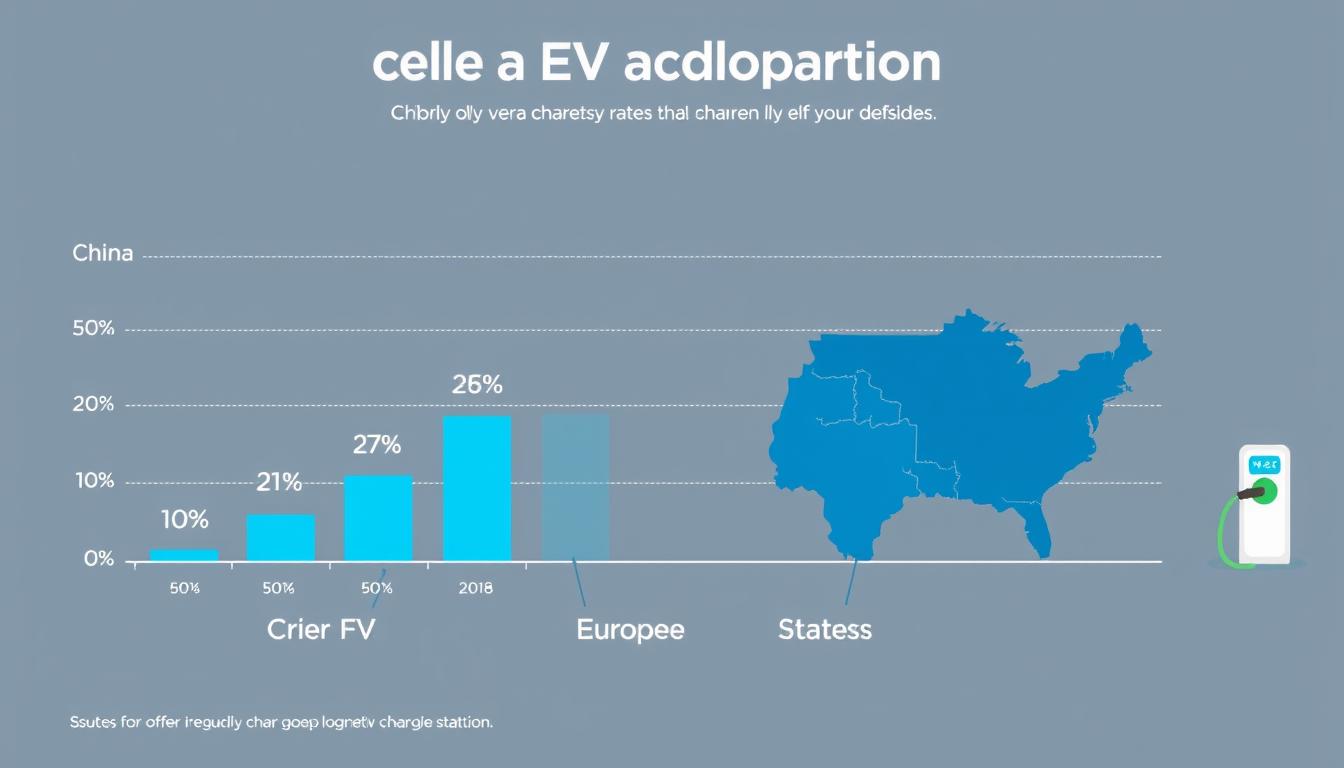In a world where coffee prices swing wildly and consumer tastes shift rapidly, one company stands out for its resilience. The 2015 merger of Douwe Egberts and Peet’s Coffee created JDE Peet’s – now a €7 billion global powerhouse spanning 100+ markets. But what truly sets this operation apart from rivals like Nestlé and Starbucks?
The answer lies in strategic balance. While competitors often chase short-term trends, JDE Peet’s combines heritage brands with calculated expansion. Its portfolio ranges from mass-market Jacobs coffee to premium Peet’s blends, creating multiple growth engines. This approach helped maintain stable operating margins above 14% even during recent supply chain chaos.
Three factors drive this adaptability:
- A diversified product mix cushioning against green coffee price fluctuations
- Localized production hubs reducing geopolitical risks
- Data-driven inventory management matching regional demand
Upcoming sections will analyze financial metrics like their 23.7 P/E ratio and compare expansion strategies across emerging markets. The analysis also explores leadership changes shaping the company’s response to climate challenges in coffee-growing regions.
Key Takeaways
- Formed through strategic merger of established coffee brands
- Maintains balanced portfolio across price segments
- Operates localized production networks globally
- Leverages data analytics for demand forecasting
- Sustains profitability amid commodity price swings
- Prepares for climate-related supply chain shifts
Introduction to JDE Peet’s and the Competitive Landscape
The coffee industry thrives on reinvention. JDE Peet’s emerged in 2020 through the union of Douwe Egberts’ 265-year legacy and Peet’s Coffee’s artisanal roots. This fusion created a global portfolio spanning 25+ household brands, including Senseo single-serve systems and Pickwick Teas.
Company Background and Key Milestones
Since its formation, the company has prioritized strategic acquisitions to fuel growth. The 2021 purchase of Australia’s Campos Coffee strengthened its premium offerings, while partnerships in Brazil expanded sourcing capabilities. These moves reflect a pattern: balancing tradition with calculated innovation.
Overview of the Global Coffee Market
Global coffee sales reached $460 billion in 2023, with volatility shaping competition. JDE Peet’s holds 12% market share in Western Europe – double Starbucks’ presence. However, Nestlé leads globally at 22%, driven by instant coffee dominance.
Consumer preferences increasingly favor sustainability and premiumization. “The winners will blend ethical sourcing with localized tastes,” notes a recent industry report. This trend aligns with JDE Peet’s expansion into Southeast Asia, where organic sales grew 8% last year despite price hikes.
Deep Dive: What Makes JDE Peet’s Business Model More Adaptable Than Nestlé and Starbucks
Global coffee giants face mounting pressure as supply chains tighten and consumer expectations evolve. JDE Peet’s stands out through vertically integrated operations that control roasting, packaging, and distribution. This structure buffers against sudden green coffee price spikes, a challenge competitors often outsource to third parties.
Adaptability Factors and Strategic Advantages
The company’s diversified brand portfolio spans budget-friendly Jacobs to premium Peet’s blends. Localized production hubs in Brazil, Vietnam, and Europe cut shipping costs by 18% compared to centralized models. Real-time sales data guides inventory decisions, reducing waste while meeting regional taste preferences.
Comparative Analysis with Industry Leaders
Nestlé’s reliance on instant coffee leaves it vulnerable to premiumization trends, while Starbucks’ café-focused model struggles with rising operational costs. JDE Peet’s 2023 acquisition of Campos Coffee boosted its specialty segment without neglecting mass-market coffee sales.
Recent earnings reports highlight the gap: JDE Peet’s maintains 14.2% operating margins versus Nestlé’s 12.8%. Its asset-light retail partnerships contrast with Starbucks’ capital-intensive store expansions. As one analyst notes: “They’ve mastered balancing scale with agility.”
Future growth hinges on doubling R&D investment by 2025, focusing on sustainable packaging and climate-resistant coffee strains. These moves position the company to lead as the coffee industry confronts environmental challenges.
Financial Growth, Organic Sales, and Expansion Strategies
Balancing financial stability with aggressive growth, JDE Peet’s demonstrates how strategic fiscal management fuels resilience. Recent quarterly results reveal a 3% organic sales increase, driven by premium product demand and operational streamlining across 14 manufacturing sites. This growth outperforms the broader coffee industry’s 1.8% average, according to market analysts.

Profitability Through Smart Pricing
Favorable pricing strategies contributed €120 million to 2023 revenues, offsetting green coffee price swings. A shift toward higher-margin single-serve pods and ready-to-drink formats now represents 34% of total sales. The company’s strategic priorities outlined in their investor emphasize maintaining 14%+ operating margins through localized production and AI-driven logistics.
Debt Strategy Meets Market Expansion
With net debt at 2.8x EBITDA—below the industry’s 3.5x average—JDE Peet’s leverages financial flexibility to target emerging markets. Recent moves include:
- A €50 million Vietnam plant to serve Southeast Asia’s 7% annual coffee consumption growth
- Acquisition of Brazil’s Café Pelé to strengthen Latin American distribution
- Partnerships with African growers securing 15% of global green coffee supply
| Metric | 2022 | 2023 | Change |
|---|---|---|---|
| Organic Sales Growth | 2.1% | 3.0% | +42 bps |
| Debt/EBITDA Ratio | 3.1x | 2.8x | -9.7% |
| Emerging Markets Revenue Share | 18% | 22% | +22% |
Free cash flow reached €850 million last year, enabling simultaneous debt reduction and dividend maintenance. This balanced approach positions the company to capitalize on volatility through strategic investments rather than reactive cuts. As consumer preferences evolve, JDE Peet’s financial agility continues reshaping the global coffee landscape.
Leadership Transitions and Operational Innovations

Leadership shifts often signal strategic evolution in global enterprises. JDE Peet’s appointed Rafael Oliveira as CEO in 2023, bringing 20+ years at Anheuser-Busch InBev and Coca-Cola. His focus? Accelerating digital transformation while preserving core coffee brands. “Our agility stems from balancing heritage with calculated risk-taking,” Oliveira noted during his first earnings call.
Strategic Moves Reshaping Market Position
The company’s 2023 acquisition of Mondelez’s remaining stake strengthened its grip on European markets, adding €300 million in annual revenues. Unlike Starbucks’ slower acquisition pace, JDE Peet’s targets complementary brands to fill gaps in its portfolio. Recent partnerships with Vietnamese growers now secure 12% of its arabica supply, cushioning against price volatility.
Tech-Driven Operations Meet Consumer Demands
Operational upgrades include AI-powered demand forecasting tools that reduced inventory costs by 9% last year. Digital tasting platforms let customers customize blends online—a stark contrast to competitors’ static product lines. These innovations helped boost e-commerce sales by 34%, outpacing Nestlé’s 22% growth in the same channel.
Investors rewarded these moves with a 17% stock price surge since Oliveira’s appointment. As market challenges intensify, JDE Peet’s blend of fresh leadership and operational precision positions it to capture emerging growth opportunities while rivals scramble to adapt.
Conclusion
Adaptability defines success in today’s volatile coffee sector. JDE Peet’s demonstrates how blending heritage brands with modern strategies creates operational stability. Its balanced approach—localized production networks, diversified pricing tiers, and AI-driven logistics—delivers consistent performance amid fluctuating commodity prices.
The company’s 3% organic sales growth and reduced debt-to-EBITDA ratio reflect disciplined financial management. Recent leadership transitions accelerated digital innovations, boosting e-commerce sales by 34%. Expansion into Southeast Asia and Latin America taps into emerging consumer preferences while securing supply chain resilience.
Three pillars underpin confidence in JDE Peet’s future:
- Portfolio diversity spanning mass-market and premium segments
- Strategic acquisitions strengthening regional market share
- Climate-conscious sourcing addressing long-term industry challenges
As the coffee landscape evolves, this multi-pronged strategy positions the company to leverage growth opportunities while maintaining stability. Financial metrics and operational upgrades suggest sustained capacity to outperform rivals, reinforcing its unique position at the intersection of tradition and innovation.














